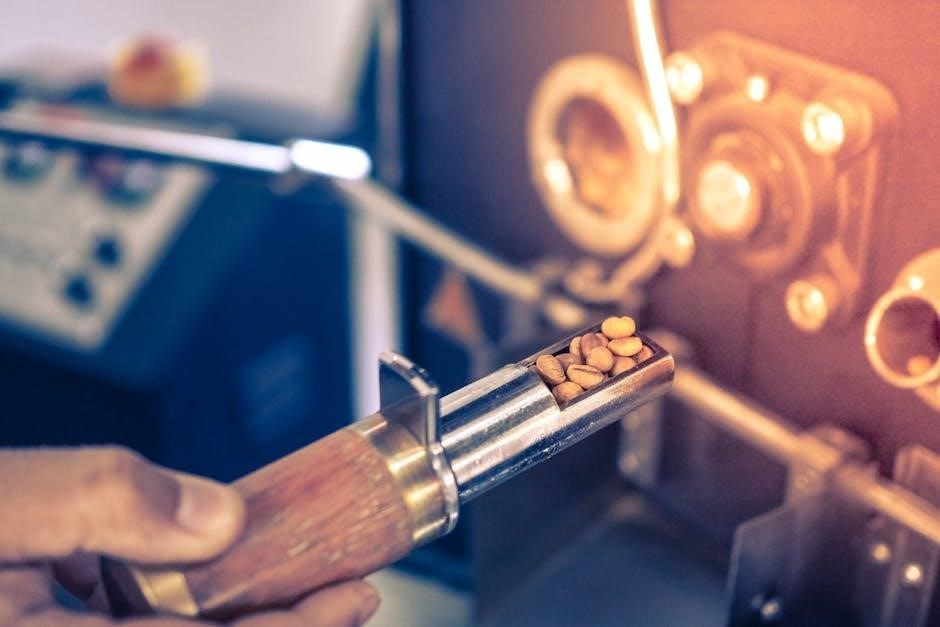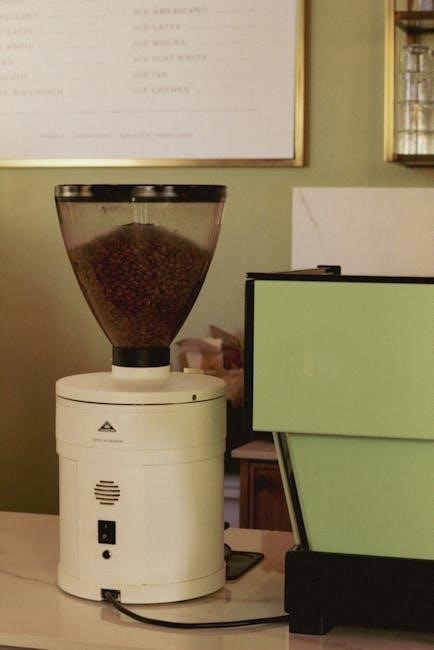The Rogue is a versatile and dynamic class in Pathfinder, excelling at stealth, precision, and cunning․ They thrive as both combatants and problem-solvers, making them a popular choice for players seeking adaptability and strategic depth in various scenarios․
1․1 Overview of the Rogue’s Role in a Party
Rogues are versatile characters who excel at both combat and problem-solving, making them invaluable to any party․ Their expertise in stealth, deception, and precision allows them to handle situations that require finesse rather than brute force․ Whether disabling traps, gathering information, or dealing critical hits, the Rogue’s adaptability ensures they contribute effectively in diverse scenarios, supporting allies while excelling at solo tasks․
1․2 Key Features and Abilities of the Rogue Class
Rogues possess exceptional stealth, precision, and cunning, making them versatile in both combat and non-combat scenarios․ Their key features include Sneak Attack for extra damage, mastery of multiple skills like Stealth and Deception, and Trapfinding to detect and disarm hazards․ They also gain Evasion and Improved Uncanny Dodge, enhancing their defensive capabilities, and benefit from high Reflex saves and Weapon Finesse, emphasizing agility and finesse over brute strength․

Race Selection for Rogues
Races like Halfling, Half-Elf, and Gnome complement Rogues with bonuses to Dexterity and skills, enhancing stealth, agility, and overall effectiveness in both combat and exploration scenarios․
2․1 Best Races for Rogues in Pathfinder
The top races for Rogues are Halfling, Half-Elf, and Gnome․ Halflings gain a Dexterity bonus and luck bonus, enhancing stealth and skill checks․ Half-Elves offer flexibility with two ability score boosts, ideal for balancing Dexterity and Charisma․ Gnomes provide a Dexterity bonus and access to illusion magic, complementing the Rogue’s cunning playstyle․ These races’ traits enhance the Rogue’s agility, skill versatility, and combat effectiveness․
2․2 Racial Traits That Enhance Rogue Abilities
Racial traits like Halfling’s luck bonus, Half-Elf’s adaptability, and Gnome’s illusion magic enhance Rogue effectiveness․ Dexterity boosts from Halflings and Gnomes improve stealth and agility, while Half-Elves’ skill versatility complements the Rogue’s broad skill set․ These traits synergize with key abilities, making certain races ideal for specific Rogue builds, ensuring a tailored approach to optimizing their sneaky and cunning playstyle in Pathfinder․
Rogue Class Features
The Rogue excels through versatility, with key features like Sneak Attack, Skill Mastery, and Trapfinding․ These abilities make them adaptable and invaluable in any party, solidifying their role as cunning operatives in both combat and exploration scenarios․
3․1 Sneak Attack and Its Mechanics
Sneak Attack is the Rogue’s signature ability, dealing extra damage when attacking a flat-footed or flanked enemy․ It requires a Dexterity modifier of at least +1 and scales with level, increasing damage output significantly․ Proper positioning, teamwork, and strategic planning are crucial to maximize its effectiveness, making it a cornerstone of the Rogue’s combat strategy and a key factor in their versatility and lethality․
3․2 Skill Mastery and Versatility
Rogues excel in skill mastery, with access to an extensive list of abilities that enhance stealth, deception, and problem-solving․ Their high skill point allocation allows for specialization in areas like Acrobatics, Perception, and Sleight of Hand․ This versatility enables Rogues to adapt to diverse scenarios, making them invaluable for scouting, disabling traps, and outwitting foes, both in and out of combat situations․
3․3 Trapfinding and Its Practical Applications
Rogues possess the extraordinary ability to detect and disarm traps, enhancing party safety and tactical advantages․ This skill is crucial in dungeons and exploration, preventing damage and resource loss․ Trapfinding complements stealth and agility, allowing Rogues to navigate perilous environments seamlessly․ As they level up, their expertise grows, making them indispensable in avoiding hazards and securing areas, thus safeguarding their companions effectively․

Choosing the Right Archetype
Selecting the perfect archetype is pivotal for shaping your Rogue’s identity and playstyle, as it tailors their abilities and enhances their unique strengths in combat and exploration․
4․1 Popular Rogue Archetypes (Thief, Scoundrel, etc․)
Popular Rogue archetypes like the Thief and Scoundrel offer distinct playstyles․ The Thief excels at stealth, cunning, and agility, while the Scoundrel leverages charisma for deception and social manipulation․ These archetypes provide unique abilities, such as improved sneak attack opportunities or enhanced skill versatility, allowing players to tailor their Rogue to fit their preferred role in the party and combat scenarios․
4․2 Specialization and Playstyle Options
Rogues can specialize in various playstyles, from deadly assassins to cunning duelists․ Archetypes like the Thief emphasize stealth and agility, while others focus on charisma or brute strength․ Players can choose to excel in melee, ranged combat, or skill-based problem-solving, allowing for highly customizable builds that fit their preferred role and campaign demands․

Skill Selection and Optimization
Rogues rely on skills like Stealth, Sleight of Hand, and Perception to excel․ Optimizing these abilities enhances their versatility in both combat and role-playing scenarios, making them indispensable․
5․1 Essential Skills for Rogues
Stealth, Sleight of Hand, and Perception are cornerstone skills for rogues, enabling them to excel in reconnaissance and evasion․ Acrobatics enhances mobility, while Disable Device and Escape Artist are crucial for overcoming traps and restraints․ These skills not only define the rogue’s versatility but also complement their combat prowess, making them indispensable in both exploration and high-stakes encounters․
5․2 Skill Synergies and Party Contributions
Rogues excel by combining skills like Perception for threat detection, Disable Device for trap removal, and Acrobatics to avoid hazards․ These abilities enhance party safety and effectiveness, allowing other members to focus on their roles․ Skill synergies also prevent conflicts, ensuring each class contributes uniquely, making the rogue an invaluable asset to any adventuring group․

Combat Strategies for Rogues
Rogues excel in combat through stealth, precision, and clever positioning․ They rely on accuracy and cunning, avoiding direct confrontations to exploit weaknesses from unexpected angles․
6․1 Stealth and Initiative in Combat
Rogues thrive in combat by mastering stealth and initiative, using their high Dexterity to act first and catch enemies off guard․ By leveraging cover, shadows, and terrain, they can set up advantageous positions for sneak attacks․ Their ability to remain undetected allows them to control the flow of battle, making them invaluable for initiating engagements and disrupting enemy strategies effectively․
6;2 Positioning and Teamwork Tactics
Rogues utilize their agility to avoid direct confrontations, ensuring they remain elusive targets while continuously disrupting enemy strategies․ They excel at positioning themselves to support allies, setting up flanking opportunities, and controlling enemy movements to create advantageous openings․ By disabling opponents through precision strikes and clever tactics, they avoid overextending, making them a vital asset in any coordinated team effort․ This strategic approach not only enhances the party’s combat efficiency but also ensures their longevity in prolonged battles․
Character Background and Role-Playing
A Rogue’s backstory defines their motivations and personality, shaping interactions and decisions․ Alignments like chaotic neutral or lawful evil influence their moral compass, adding depth to their role-playing experience․
7․1 Crafting a Compelling Rogue Backstory
A well-crafted backstory enriches your Rogue’s identity, defining their motivations and past․ Whether they’re a street urchin, a charming thief, or a betrayed noble, their history shapes their skills and alignment․ Details like past mentors, key events, or personal losses add depth, making your Rogue memorable and immersive in the game world․ Align their story with their abilities for a cohesive playstyle․
7․2 Alignments and Their Impact on Rogue Playstyle
A Rogue’s alignment significantly shapes their playstyle․ Lawful rogues often adhere to strict codes, while chaotic ones embrace unpredictability․ Good-aligned rogues may focus on justice, while evil ones prioritize personal gain․ Neutral rogues balance morality and self-interest․ Alignment influences their motivations, interactions, and moral dilemmas, adding depth to their role in the party and the game’s narrative․
Feats for Rogues
Feats are crucial for optimizing a Rogue’s effectiveness․ They enhance abilities like sneak attack, stealth, and combat prowess․ Choosing feats like Weapon Finesse or Precision Attack can significantly boost a Rogue’s lethality and versatility in both combat and skill-based scenarios․
8․1 Key Feats for Rogue Effectiveness
Key feats like Weapon Finesse and Precision Attack boost a Rogue’s combat efficiency․ Weapon Finesse enhances attack rolls with light weapons, while Precision Attack improves sneak attack damage․ Critical Focus increases the chance to confirm critical hits, making Rogues more lethal․ Other feats complement skills, ensuring versatility in both combat and stealth, making the Rogue a formidable and adaptable character in any scenario․
8․2 Feat Progression and Build Planning
Planning a Rogue’s feat progression is crucial for maximizing effectiveness․ Early feats like Weapon Finesse and Precision Attack lay the foundation for combat efficiency, while later feats enhance stealth or damage output․ Each choice should align with the Rogue’s archetype and playstyle․ Discussing feat selections with the party ensures synergy and avoids overlap, making the Rogue a well-rounded and valuable team member in any campaign setting․
Equipment and Gear
Rogues rely on versatile weapons, light armor, and specialized tools to enhance their stealth and combat effectiveness․ Choosing the right gear is essential for optimizing their sneaky, precise playstyle․
9․1 Weapons and Armor for Rogues
Rogues excel with weapons that emphasize precision and stealth, such as daggers, short swords, and shortbows․ Light armor is preferred to maintain mobility and Dexterity bonuses to AC․ Magic items like +1 short swords or gloves of archery enhance their effectiveness․ Rogues also benefit from tools like thieves’ tools and grappling hooks, which complement their sneaky playstyle and versatility in both combat and exploration․
9․2 Useful Magic Items and Tools
Useful magic items for rogues include cloaks of elvenkind for stealth, amulets of natural armor for defense, and rings of protection to boost AC․ Wands of invisibility provide tactical advantages, while boots of speed enhance mobility․ Tools like a burglar’s pack (crowbar, hammer, and more) and thieves’ tools are essential for skill-based tasks․ These items enhance a rogue’s versatility and effectiveness in both combat and exploration scenarios․

Multiclassing and Rogue Builds
Multiclassing with Rogue offers versatility, combining stealth and cunning with other classes’ strengths․ Popular combinations include Rogue/Ranger for archery mastery or Rogue/Barbarian for lethal precision and resilience․
10․1 Benefits and Drawbacks of Multiclassing
Multiclassing enhances versatility, combining Rogue’s stealth with other classes’ strengths, but may delay key features like Sneak Attack․ It offers flexibility but requires careful planning to avoid diluting the Rogue’s identity and effectiveness in specialized roles․
10․2 Notable Rogue Multiclass Combinations
Prominent Rogue multiclass combinations include Rogue/Ranger for enhanced ranged and melee prowess, Rogue/Bard to leverage charisma and skill versatility, and Rogue/Monk for blending stealth with martial arts․ These combinations enhance the Rogue’s adaptability while maintaining core strengths, though careful planning is needed to balance abilities and avoid redundancy in skill sets or combat styles․

Advanced Tactics and Tips
Mastery of positioning, environmental advantages, and skill synergy enhances a Rogue’s effectiveness․ Prioritize flanking, utilize higher ground, and coordinate with allies to maximize damage and survivability in combat․
11․1 Mastering Sneak Attack and Critical Hits
Mastery of sneak attack requires strategic positioning and flanking․ Coordinating with allies to create opportunities for critical hits amplifies damage output․ Focus on improving critical hit chance through feats like Critical Focus and enhancing sneak attack damage with precision․ Utilizing environments and terrain to set up ambushes ensures consistent, high-impact attacks, making you a formidable threat in any combat scenario․
11․2 Utilizing Environment and Terrain
Rogues excel at leveraging their surroundings to gain tactical advantages․ Use cover, elevation, and hazards to set up ambushes or escape danger․ Creating chokepoints or using stealth in cluttered terrain enhances effectiveness․Mastering terrain allows rogues to outmaneuver foes, ensuring optimal positioning for sneak attacks and minimizing exposure to threats, making the battlefield an ally in every encounter․
The Rogue is a dynamic and rewarding class, blending stealth, skill, and cunning․ With proper planning and creativity, they excel in any campaign, offering endless strategic possibilities․
12․1 Summarizing the Rogue’s Strengths and Weaknesses
The Rogue excels at stealth, precision, and versatility, making them invaluable in both combat and exploration․ Their Sneak Attack and skill mastery provide significant advantages, but their reliance on teamwork and positioning can be a drawback․ While they thrive in adaptive roles, their fragility in direct combat and dependence on strategic play may limit their effectiveness in certain scenarios, requiring careful build planning and tactical awareness․
12․2 Encouragement and Final Tips for New Players
Embrace the Rogue’s versatility and creativity, as their adaptability shines in various scenarios․ Communicate with your party, choose archetypes that suit your playstyle, and experiment with builds․ Don’t fear mistakes—learn from them․ Focus on teamwork and strategic positioning, and remember, mastery takes time․ Most importantly, enjoy crafting your Rogue’s unique story and making unforgettable memories at the table!
























